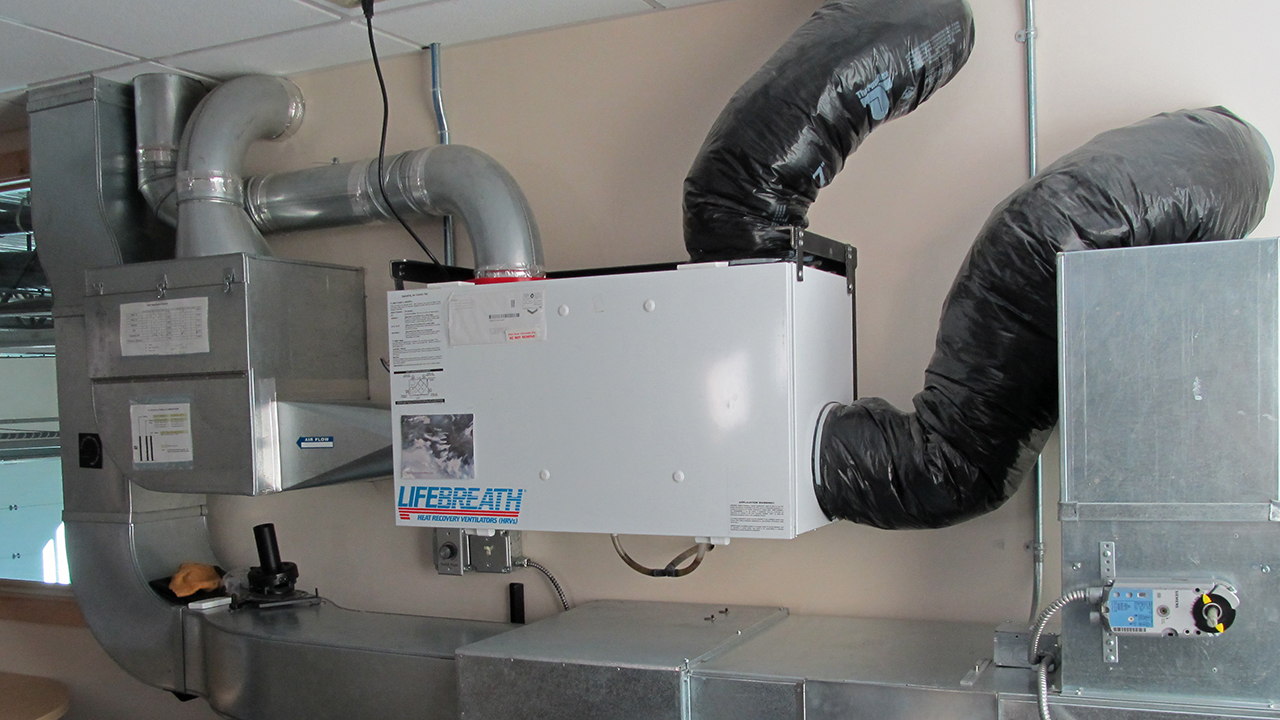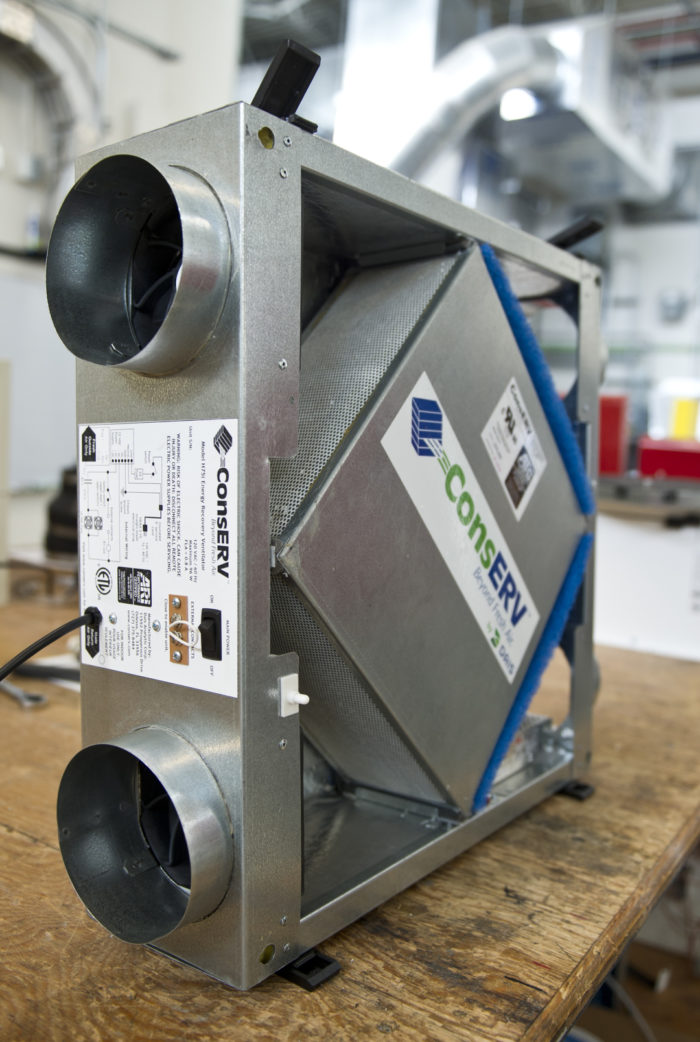HRV Explained for Families: A Simple Guide
Wiki Article
Unveiling the Secret Conveniences and Uses of Heat Recovery Ventilation in Sustainable Layout
Heat Recovery Ventilation (HRV) systems play an essential role in sustainable style. They assist in a continuous exchange of stale indoor air with fresh outside air, considerably improving interior air high quality. In addition, HRVs contribute to power efficiency by recovering heat from exhausted air, which can reduce utility prices. Comprehending the multifaceted advantages and applications of HRVs exposes their significance in modern-day design. What various other benefits do these systems offer in the quest of sustainability?Understanding Heat Recovery Ventilation Equipments
Heat recovery ventilation (HRV) systems are made to boost indoor air high quality while lessening energy loss. These systems utilize a mechanical air flow approach to exchange stagnant interior air with fresh outdoor air, ensuring a continuous supply of tidy air. By recording warm from the exhaust air, HRVs prerequisite incoming air, lowering the need on heating and cooling systems. This procedure not just improves thermal convenience but additionally adds to energy efficiency in property and commercial buildings. In addition, HRV systems aid regulate humidity levels and decrease interior contaminants, advertising a much healthier living environment. Their calculated implementation is essential for accomplishing sustainable style goals, as they provide a balance in between energy preservation and passenger well-being.How HRV Solution Work
While several may be familiar with air flow systems, understanding exactly how heat recovery ventilation (HRV) systems run is important for valuing their advantages. HRV systems function by trading stagnant indoor air with fresh outside air while moving warm between the two streams. This process happens in a heat exchanger, where heat from the outward bound air heats the incoming air throughout colder months, lessening power loss. Conversely, in warmer months, the system can cool down incoming air making use of the cooler outward bound air. HRVs are equipped with followers to promote air movement and filters to get rid of particulates, guaranteeing a constant, well balanced ventilation process. This ingenious layout not only improves power performance but also contributes to preserving a comfortable interior setting.Enhancing Indoor Air Quality
Indoor air quality can considerably affect health and wellness and well-being, making reliable ventilation essential in contemporary homes. Heat Recovery Ventilation (HRV) systems play a crucial function in keeping indoor air top quality by continually exchanging stagnant indoor air with fresh outdoor air. This procedure not only lowers airborne contaminants however likewise decreases humidity levels, which can result in mold and mildew development and respiratory system problems. HRV systems filter incoming air, eliminating irritants and particulates, consequently giving a much healthier living atmosphere. Furthermore, these systems aid get rid of odors and unpredictable organic compounds (VOCs) frequently discovered in house items. By ensuring a consistent circulation of tidy air, HRV systems add to a general improved indoor atmosphere, advertising convenience and wellness for passengers.Power Efficiency and Cost Cost Savings
Energy efficiency stands apart as a considerable advantage of Heat Recovery Ventilation (HRV) systems. By catching and recycling the warmth from worn down indoor air, HRVs minimize the energy required for home heating incoming fresh air, leading to lowered energy usage. This performance translates into lower utility bills, offering significant cost financial savings for property owners and businesses alike. Furthermore, HRV systems often get power performance motivations and discounts, even more enhancing their financial charm. In time, the preliminary financial investment in HRV innovation can cause a beneficial roi with lowered energy expenses. The combination of HRV systems not only advertises sustainable style yet also gives a useful option for achieving lasting energy savings and economic advantages.Environmental Benefits of HRV

A multitude of environmental advantages arises from the application of Heat Recovery Ventilation (HRV) systems. By efficiently moving heat from exhaust air to inbound fresh air, HRVs considerably lower the power needed for home heating and cooling areas. This power effectiveness equates to decrease greenhouse gas discharges, adding to a decline in the general carbon impact of buildings. In addition, HRV systems enhance indoor air quality by continually flowing fresh air, thus decreasing the concentration of indoor contaminants and irritants. The reduction in energy intake help in conserving all-natural sources, making HRVs an essential component of sustainable style. Generally, the ecological advantages of HRVs play an important role in advertising a healthier world and fostering environment-friendly building practices.
Versatile Applications in Modern Architecture
Heat recovery ventilation (HRV) systems are progressively being incorporated right into both property and business architectural jobs. In domestic settings, HRVs improve interior air quality while optimizing power efficiency. At the same time, in business rooms, these systems optimize ventilation strategies, demonstrating their flexibility in modern building applications.Residential Projects Combination
While modern-day style significantly stresses sustainability, the assimilation of warm recuperation ventilation systems in domestic tasks has actually become a useful remedy for enhancing interior air quality and energy effectiveness. These systems effectively transfer warmth from exhaust air to inbound fresh air, decreasing power loss and reducing heating or cooling down demands. In brand-new builds and retrofits alike, warm recovery air flow can be flawlessly incorporated, providing property owners with a healthier living setting while lowering utility prices. Furthermore, with raising understanding of environmental effects, more engineers and home builders are recognizing the lasting advantages of these systems. As a result, heat recuperation ventilation has become an essential component of lasting household style, showcasing convenience and dedication to green methods.Industrial Spaces Optimization
As modern-day industrial rooms develop to meet the needs of sustainability and performance, the application of warmth healing ventilation systems becomes a crucial technique for maximizing interior environments. These systems promote the exchange of stale interior air with fresh outside air while reclaiming warmth energy, significantly lowering power intake. This not just improves comfort for occupants however also aids in decreasing operational costs. Flexible applications can be observed in offices, retail rooms, and instructional institutions, where air top quality and temperature level control are vital. Furthermore, integrating heat recuperation air flow aligns with eco-friendly building certifications, further advertising environmental obligation. Eventually, taking on such systems in business design not only adds to sustainability goals yet likewise promotes healthier, extra effective spaces for customers.
Incorporating HRV Into Sustainable Design Practices
Incorporating heat recuperation air flow (HRV) systems into sustainable layout techniques uses substantial benefits in power efficiency and interior air top quality. By utilizing HRV, designers can develop economical remedies that not just reduce energy usage yet additionally improve the general comfort of interior atmospheres. This alignment with sustainability goals check my site settings HRV as an essential element in modern building approaches.
Energy Effectiveness Improvement
By including heat recovery air flow (HRV) systems right into lasting style methods, designers and contractors can considerably improve energy efficiency in modern-day building and constructions. HRV systems work by catching heat from outgoing stale air and transferring it to inbound fresh air, decreasing the content power needed for home heating or cooling down interior rooms. This procedure not only reduces dependence on conventional HVAC systems but additionally decreases total energy consumption. Furthermore, HRV systems can help maintain a constant indoor temperature, lowering peak energy demands. By integrating these systems, structures can accomplish substantial decreases in utility expenses and carbon impacts, lining up with sustainability objectives. Ultimately, HRV modern technology stands for a useful option for boosting energy effectiveness in the built setting, promoting more accountable source use.Indoor Air Top Quality Renovation
Exactly how can warm recovery ventilation (HRV) systems contribute to exceptional interior air high quality in modern structures? HRV systems efficiently exchange stagnant indoor air with fresh outside air while recouping warm power, reducing temperature fluctuations. This process decreases the concentration of interior pollutants, such as unstable natural compounds (VOCs), allergens, and moisture, which can degrade air quality and influence occupant health. By maintaining excellent moisture levels and making certain a continuous supply of clean air, HRVs help develop a healthier interior setting. Additionally, these systems can be integrated into sustainable design methods, advertising energy effectiveness together with enhanced air high quality. HRV Heat Recovery Ventilation. HRV modern technology plays an important function in progressing total resident convenience and health in contemporary architectural layouts.Cost-Effective Style Solutions

Frequently Asked Questions
What Maintenance Is Required for Heat Recovery Ventilation Solutions?

Upkeep for warmth recuperation ventilation systems normally involves routine filter substitutes, cleansing of warmth exchangers, evaluation of fans and air ducts, important site and making sure correct drain. These tasks assist keep effectiveness and extend the system's life-span gradually.
Can HRV Solutions Be Set Up in Existing Buildings?
Heat recovery ventilation systems can undoubtedly be installed in existing buildings. HRV Heat Recovery Ventilation. Retrofitting needs mindful planning and evaluation of the structure's format, making sure compatibility with existing systems while optimizing power performance and indoor air high qualityJust How Do HRV Systems Effect Sound Levels Indoors?
HRV systems can affect indoor noise degrees by presenting noise from outside sources with ventilation. Nevertheless, top quality installments frequently integrate sound-dampening features, decreasing sound effect while supplying reliable air exchange and keeping convenience inside.Are There Any Drawbacks to Utilizing HRV Solutions?
The disadvantages of utilizing HRV systems consist of prospective high first costs, maintenance difficulties, and the opportunity of decreased interior air quality if filters are sporadically altered, which might cause issues with humidity levels.Just how Do I Select the Right HRV System for My Demands?
Picking the right warmth recovery ventilation system involves assessing details needs, such as constructing size, climate, and energy effectiveness objectives. Furthermore, reviewing system functions, installation requirements, and maintenance factors to consider is necessary for peak performance and fulfillment.Report this wiki page